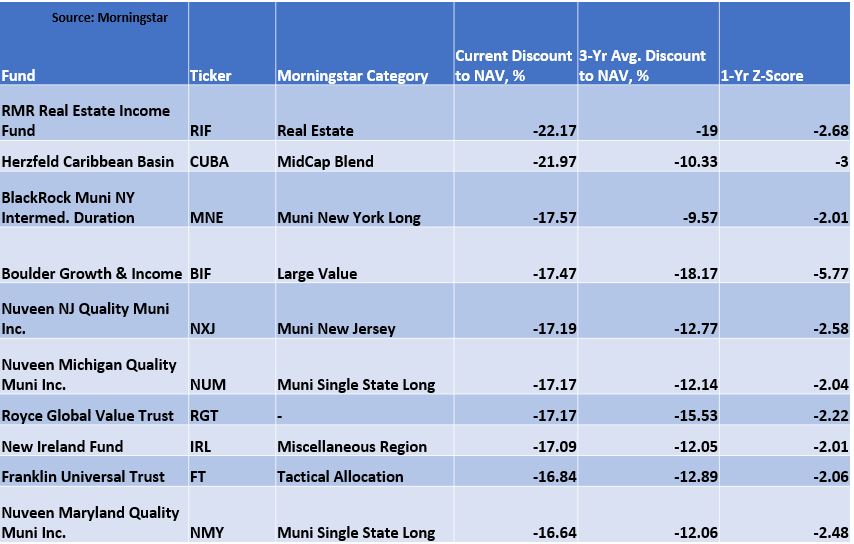Closed-End Fund Discounts

It’s debatable whether the recent stock market slide created some bargains, but there’s another corner of financial markets where inefficiencies prevail more regularly – the closed-end fund universe.
What’s a Closed-End Fund?
Unlike mutual funds, which continually issue and redeem shares according to investor demand, closed-end funds take in money and issue a finite number of shares once, in an initial public offering. After the IPO, the fund closes to new money; there are no outflows and no inflows, making the arrangement convenient for holding illiquid assets. Investors must then trade shares on an open exchange like stocks to each other rather than purchasing and redeeming with the fund itself.
For that reason, the share price of a closed-end fund can rise above or fall below the net asset value of the fund’s holdings. When a fund’s share price drops below, or trades at a discount to, its net asset value (NAV), it can be a bargain as long as investors understand there’s no guarantee that the price will match its NAV soon or ever. Sometimes activist investors accumulate closed-end fund shares to pressure fund management to liquidate the assets and use the proceeds to buy back shares in order to close the gap between price and NAV. But there’s no guarantee an activist will accumulate shares of any fund or apply pressure successfully after accumulation.
The other important feature of closed-end funds is that they often borrow money against their investments. Regulations demand that a fund have $3 in assets for every $1 of debt issued and $2 of assets for every $1 of preferred stock issued. But those rules still allow for a significant amount of borrowed money that can boost returns when the assets in the funds are doing well and interest rates remain stable or hurt returns when underlying assets are slumping and interest rates are increasing. As of the end of 2017, around 64% of closed-end funds used leverage or borrowed money, according to the Investment Company Institute.
Currently, 250 out of 638 funds in Morningstar’s database are trading at discounts to NAV of 10% or more. Municipal bond funds have significant representation among the funds trading at the largest discounts, though other classes of funds, including energy and MLP funds are among the most heavily discounted.
Any Bargains?
I compiled a list of funds trading at the biggest discounts and with a z-score of -2.5 or lower. A z-score is the difference between the fund’s current and average discounts relative to its standard deviation. Many analysts consider a z-score of -2.5 or less as an indication of cheapness.

Four of the top-10 on our list of biggest current discounts and Z-Scores of -2 or lower are muni bond funds. All of them have leverage ratios above 35%. That means if interest rates continue to move higher, bond funds using borrowed money could suffer. But if rates stabilize or decline, that could be a boon for these funds.
Also, a word of caution about the Boulder fund – I’ve seen it among funds with the cheapest discounts for many years. The discount could narrow from here, but I wouldn’t count on it to close.
Overall, investors have a variety of funds in different asset classes from which to choose. But investors should think of this type of investment as a stock investment even if the fund holds bonds. That’s because using borrowed money magnifies the overall investment risk.



